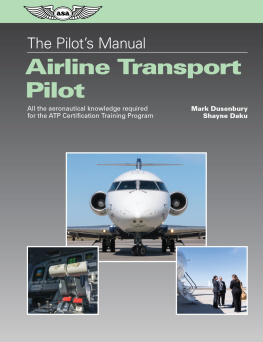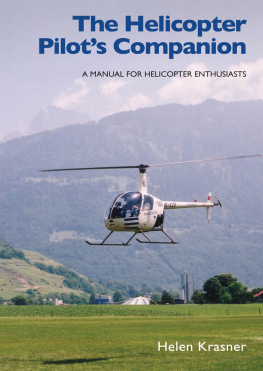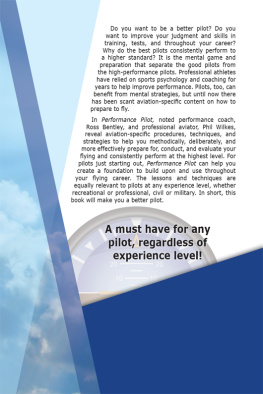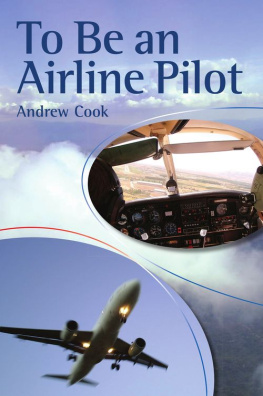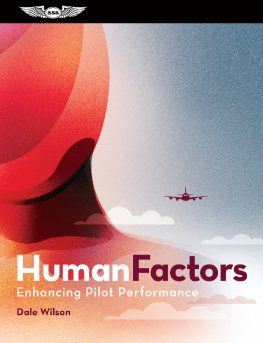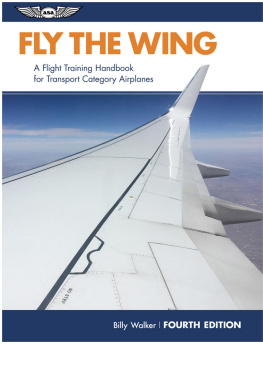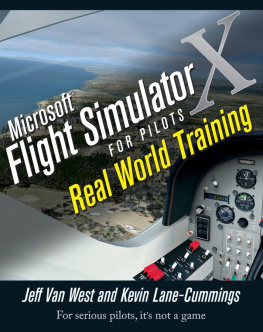Dusenbury Mark - The Pilots Manual: Airline Transport Pilot
Here you can read online Dusenbury Mark - The Pilots Manual: Airline Transport Pilot full text of the book (entire story) in english for free. Download pdf and epub, get meaning, cover and reviews about this ebook. publisher: Aviation Supplies & Academics, Inc., genre: Romance novel. Description of the work, (preface) as well as reviews are available. Best literature library LitArk.com created for fans of good reading and offers a wide selection of genres:
Romance novel
Science fiction
Adventure
Detective
Science
History
Home and family
Prose
Art
Politics
Computer
Non-fiction
Religion
Business
Children
Humor
Choose a favorite category and find really read worthwhile books. Enjoy immersion in the world of imagination, feel the emotions of the characters or learn something new for yourself, make an fascinating discovery.
- Book:The Pilots Manual: Airline Transport Pilot
- Author:
- Publisher:Aviation Supplies & Academics, Inc.
- Genre:
- Rating:3 / 5
- Favourites:Add to favourites
- Your mark:
- 60
- 1
- 2
- 3
- 4
- 5
The Pilots Manual: Airline Transport Pilot: summary, description and annotation
We offer to read an annotation, description, summary or preface (depends on what the author of the book "The Pilots Manual: Airline Transport Pilot" wrote himself). If you haven't found the necessary information about the book — write in the comments, we will try to find it.
The Pilots Manual: Airline Transport Pilot — read online for free the complete book (whole text) full work
Below is the text of the book, divided by pages. System saving the place of the last page read, allows you to conveniently read the book "The Pilots Manual: Airline Transport Pilot" online for free, without having to search again every time where you left off. Put a bookmark, and you can go to the page where you finished reading at any time.
Font size:
Interval:
Bookmark:
High Altitude Operations
In this chapter:
Principles of Energy Management
Measuring Energy
Air Density
Air Compressibilit
Mach
Energy Limits
Managing Energy
Recovering Energy at High Altitude
Banking in Transport Category Aircraft
L/DMAX
Atmospheric Considerations
Aerodynamic Ceiling
Wing Sweep
Dutch Roll
Principles of Energy Management
Total Energy (TE) is the sum of potential energy and kinetic energy.
The law of conservation of energy states that energy cannot be created or destroyed but is conserved (remains constant). Energy can be broken into two components: potential energy (PE) and kinetic energy (KE). Potential energy is energy that is stored in a static state (e.g., an aircraft at an altitude of 41,000 feet has potential energy as a result of its altitude). Kinetic energy is the energy inherent in the mass and velocity of an object (e.g., a 235,000-pound aircraft traveling at 425 knots has kinetic energy because of its mass and speed). The sum of PE and KE equals total energy (TE). PE + KE = TE. In mathematic terms, PE plus KE always equals TE. Therefore, PE and KE have an inverse relationship with one another; as PE increases, KE must decrease in order for TE to remain constant.
What does this mean when applied towards our 235,000-pound aircraft traveling at 425 knots at 41,000 feet? Recall that potential energy is energy stored, such as the altitude of the aircraft in this example. If the aircraft descended (without any change in aircraft power or configuration) the potential energy would be converted into kinetic energy (the airspeed of the aircraft would increase) and total energy remains the same. Conversely, if the aircraft starts to climb, the potential energy will increase and therefore kinetic energy (airspeed) will decrease, assuming that the aircraft power and configuration remains the same. It is important for pilots to have a basic understanding of this law, especially when operating in the higher altitudes where the aircraft is near its limitations.
Measuring Energy
Lets dig a little deeper into how kinetic and potential energy are measured and presented to the pilot. The airspeed indicator measures dynamic air pressure (kinetic energy) while the altimeter measures static air pressure (potential energy). There are errors associated with each of these measurements that need to be understood. The airspeed indicator suffers from errors relating to both air density and air compressibility. Well look at these errors individually and then discuss the overall impact and considerations when flying an aircraft at high altitude and high airspeed.
Air Density
Air density is the mass (measured as a weight per volume) of the atmosphere. Air density changes as altitude and temperature change. An increase in altitude will result in a decrease in air density, and vice versa. Temperature has the same impact on air densitya higher temperature results in lower air density. Finally, humidity also impacts air density in the same direct fashion (an increase in humidity results in a lower air density). Air density is important from an aerodynamic standpoint as well as an air measurement standpoint. A lower air density reduces the amount of lift produced by a wing, when all other factors are held constant. The airspeed indicator is built to correct for pressure-related air density changes to a certain point. If we consider an extreme case, very high altitudes have an air density near zero. If the air density is zero, the airspeed indicator would not have any ram air force (dynamic air pressure) to measure airspeed with. In short, the effectiveness of the airspeed indicator relates to the density of the air. This is where the concept of true airspeed comes into play. True airspeed (TAS) is the speed of the aircraft relative to the air mass in which it is traveling (e.g., how quickly the aircraft is approaching a cloud up ahead). As the air density decreases, the TAS will increase if all other factors remain constant.
Indicated airspeed is the speed an aircraft is moving through the air as is shown on the airspeed indicator, before any corrections for errors or nonstandard conditions are made.
Comparing two aircraft both traveling at 250 knots true airspeed, one at 10,000 feet and the other at 20,000 feet, the aircraft at 20,000 feet will show a much lower indicated airspeed. The actual speed that the aircraft are traveling (in relation to the air mass around them) is the same, but the air pressure of the higher aircraft is much lower (14.12 inHg compared with 21.09 inHg). The airspeed indicator uses air pressure in order to discern airspeed; therefore, if the air pressure changes (either dynamic or static) the airspeed indicator will change.
Described in laymans terms, dynamic air pressure (the stuff measured by an airspeed indicator) is similar to the force that we would feel if we stuck our hand outside of a moving aircraft. This dynamic pressure will decrease if the air density decreases. For example, if you stick your hand out of an aircraft traveling at exactly 200 knots at sea level (where true airspeed and indicated airspeed are the same), and then climbed the aircraft up to 35,000 feet and maintained 200 knots true airspeed (the same speed relative to the air molecules near the aircraft), you would feel less air pressure against your hand. This decrease in air density would result in less dynamic force (given the same speed relative to the air mass) and therefore less indicated airspeed.
As altitude is increased, the true airspeed at which the aircraft will stall increases.
How does this relate to stall speed? Generally, the indicated stall speed does not change much with altitude if all other factors (weight, load factor, configuration, etc.) are held constant. However, the TAS that the aircraft stalls at will increase as altitude increases.
Air Compressibility
A pressure wave forms in the air as an object, such as an airplane, passes through the air at a speed greater than the speed at which sound can travel.
Compressibility is another factor that has an impact both on aerodynamic factors relating to flight as well as on the measurement of airspeed. The concept of compressibility is that air density and pressure will increase directly ahead of an object moving through the air. The faster the object travels through the air, the higher the air density and pressure of the air impacted by the moving object. If an aircraft flies fast enough, it will create a wave of air that builds up in front of it; this is known as a pressure wave or shock wave (figure 1-1). Shock waves create a lot of problemssuch as excessive drag and control problemsfor most transport category aircraft. An additional concern occurs when an aircraft travels so fast that airflow surrounding it reaches the speed of sound. Generally, compressibility factors are not a consideration until the aircraft is at high altitude and high airspeedmore than 10,000 feet and 200 knots.

Figure 1-1. Compressibility.
Mach
Mach is a measurement of the speed of the aircraft in relation to the speed of sound. Mach is typically shown as a decimal, with 1.0 Mach (M) equal to the speed of sound; therefore, an aircraft flying at 1.0 Mach is traveling at the speed of sound. The speed of sound varies with air temperature, and temperature in turn varies with altitude. As the altitude increases, the temperature and the speed of sound decreases. Most transport category aircraft will present a Mach readout to the flight crew somewhere on the primary flight display (PFD).
Next pageFont size:
Interval:
Bookmark:
Similar books «The Pilots Manual: Airline Transport Pilot»
Look at similar books to The Pilots Manual: Airline Transport Pilot. We have selected literature similar in name and meaning in the hope of providing readers with more options to find new, interesting, not yet read works.
Discussion, reviews of the book The Pilots Manual: Airline Transport Pilot and just readers' own opinions. Leave your comments, write what you think about the work, its meaning or the main characters. Specify what exactly you liked and what you didn't like, and why you think so.

